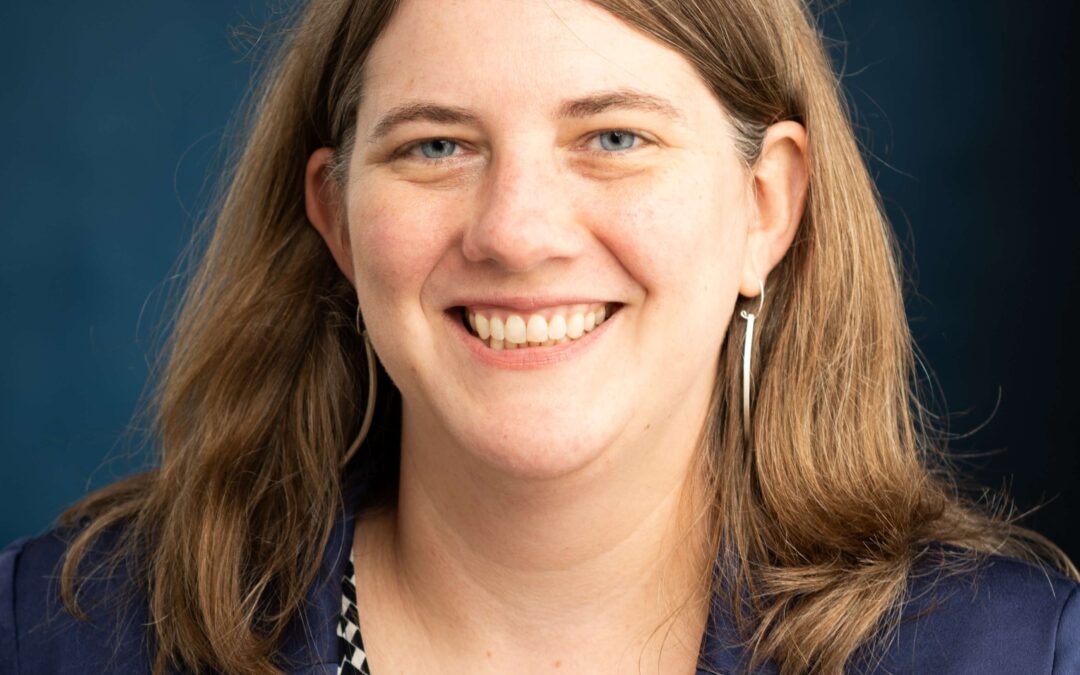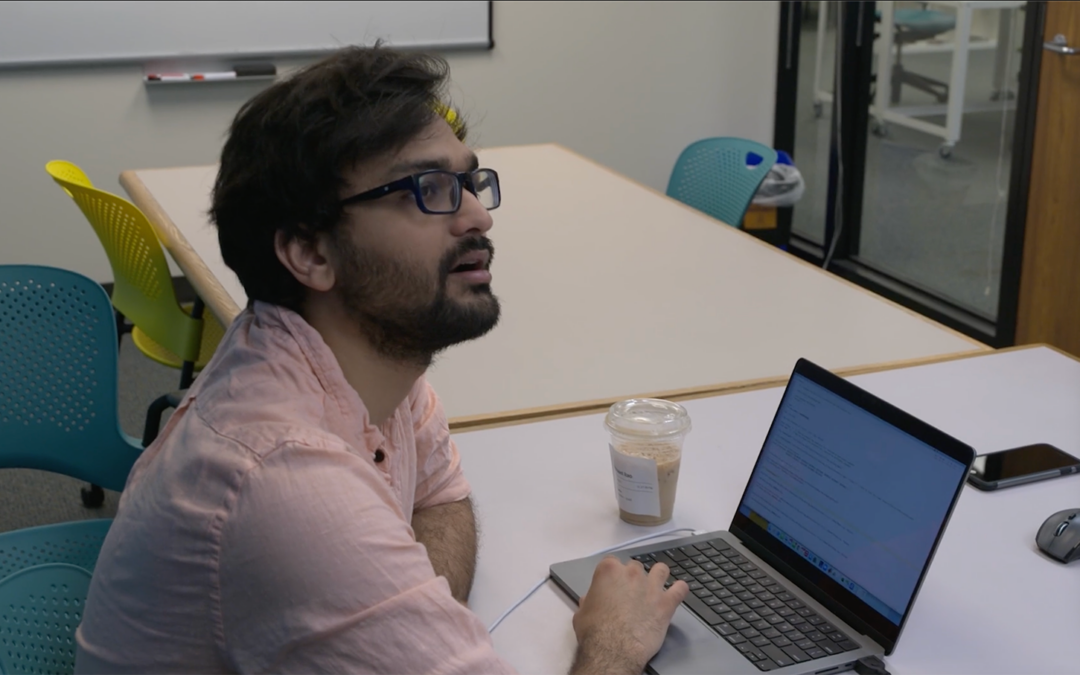The Regulation and Politics of “home-based moneymaking”
People often think of home and work as two separate aspects of their lives, but the line continues to blur for many working Americans, particularly since the pandemic. With inflation and rising costs, more and more people are turning to side gigs and second sources of income – often from their own homes.
Sociology doctoral candidate and CID Student Fellow Luis Flores has dedicated his career to studying these practices through a historical framework, termed “home-based moneymaking.” Luis studies how labor markets, wealth, and social inequality are shaped by changes to the political and regulatory boundary between home and market in the United States.
The practice of earning income from home may be commonplace and well-accepted today, but that wasn’t always the case.
“Today, it’s common to treat every home as a potential business or a speculative asset, every person an entrepreneur, and every relationship a potential economic opportunity,” Luis explained. “But for much of the 20th century, the mixing of domestic and market life, by turning homes into sites of production, exchange, or speculation, was seen as a threat to both family life and to union-won economic security.”
Luis analyzes archives and historical records to understand how this change came about. “While home-based moneymaking was initially confined to groups at the margins of the most stable labor markets – the domain of ‘displaced homemakers,’ workers of color, immigrants, and the ‘home rich but cash poor’ elderly – the appeal spread as labor market restructuring broadened experiences of uncertainty. These practices quickly conflicted with regulatory boundaries, in land-use zoning, tax codes, labor law, and mortgage law that enforced the postwar separation between home and market. Their contested incorporation remade gendered divisions between home and market, and racialized constructions of economic informality.”
Luis’ research amplifies something that has been happening for decades. “We can’t really understand the modern economy without considering ways that the home has been restructured in relation to it,” he said. “That started in the 1970s and 80s. So, in some ways, I’m telling a pre-history of the sharing economy. It’s a very non-technological story. By the time AirBnB came around, there were 40 years of fighting over zoning codes that determine whether or not accessory units and garages rentals were allowed.”
Luis’ dissertation, The Regulatory Politics of Home-Based Moneymaking After the Family Wage, analyzes four main areas of home-based money making to understand how policy and regulations impact Americans’ efforts to earn a living.
How do mortgage laws, taxation, labor and land use affect money making at home?
1: Efforts to Overturn the 1938 Fair Labor Standards Acts in the 1980s
The 1938 Fair Labor Standards Act prohibited industrial house work, which was commonly leveraged by Latina and Asian immigrant women in Los Angeles and New York. Luis traces efforts from the 1980s that worked to undo the act in the first case of his dissertation.
2: The emergence and spread of “multi-tier selling schemes”
Avon, Amway, Tupperware and others are well-known names today, but faced a great deal of opposition when they originated. “Multi-tier selling schemes have more than 18.6 million participants by 2017. I study lawsuits over tax deductions as sellers defended household expenses as business deductions for their home-based ventures,” he said.
3: Renting Extra Space to Tenants
A third case centers on the growth in households who rent out “accessory dwelling units,” (ADUs) often garages, spare bedrooms, or basements, to tenants. These “illegal conversions” challenged strict land-use restrictions and elicited “zoning blitzes” in the 1980s aimed to curb unlawful rentals first concentrated in immigrant neighborhoods. By the late 1990s, policy efforts to legitimate these as “granny flats” portrayed ADUs as an extension of the single-family home, rather than an encroachment of the market into the home.

Inspection of illegal “garage conversion” in South Gate, while tenant children sleep, 1989, Los Angeles Times. Before renting out rooms or garages to tenants in single-family homes became moralized for white and middle-class households, it was a highly stigmatized resilience strategy for immigrant households at the margins of labor and housing markets. These “illegal conversions” challenged strict land-use restrictions and elicited “zoning blitzes” in the 1970s and 80s aimed to curb unlawful rentals first concentrated in immigrant neighborhoods. By the late 1990s, policy efforts to legitimate these as “granny flats” portrayed ADUs as an extension of the single-family home, rather than an encroachment of the market into the home.
4: The Origins and Growth of Home Equity Extractions
A final case focuses on the origins and growth of home equity extractions – using liquid home wealth to finance current expenses. “The idea of being able to leverage the wealth of your home is a relatively recent one,” Luis said. “For much of American history home wealth was highly illiquid, and those restraints on borrowing on equity were meant to protect homes from financial risk.”
Homeowner mobilizations in the 1980s to assist “cash poor, but house rich” seniors contributed to the deregulation of mortgage law to allow routine equity extractions—providing a new source of non-waged resources for “cash poor” homeowners of all ages.
From Dissertation to Book Publication
After defending his dissertation work, Luis plans to turn his dissertation project into a book manuscript for submission to a university press. This will involve a book workshop, restructuring and extending current chapters, and research on two additional cases on the regulatory incorporation of “home-based daycare centers” and “cottage food laws” that regulate the sale of home-cooked meals.
“These practices were how many families solved problems of child care,” Luis said. “The child care piece is a crucial one that will allow me to consider the crisis of gendered forms of care as part of the 70s and 80s, as more members of households began to work outside the home too.”
While there were daycare centers in the second half of the 20th century, Luis said there was a resistance to paid childcare in general. “It was okay to utilize churches and community places, but there was quite a bit of resistance to the idea of dropping off your kid at a stranger’s house.”
As Luis began to research child care in the home, it became clear home-childcare emerged from the precarity of both consumers and providers of child care. “As more dual-earning families (or single mothers under workfare) needed childcare, other households needed home-based work. The angle for me is, what did it mean for women to turn their homes into daycare centers as a way to generate household resources?” he asked.
Another thread that runs throughout this work is that “immigrant forms of labor are exciting things that people want to do, like food trucks. Pop-ups are seen as exciting, creative labor now. But they come from immigrant informality and a place of labor market exclusion. People did this because they couldn’t get a 9-5 job.”
“What does it say about 9-5 jobs that people are excited about a precarious form of creative work? People are choosing between two bad alternatives, and we need to take that alienation of work seriously in propelling the rise of informality,” he said.
A Drive to Return to His Hometown Community
As a historical sociologist, Luis’ interest in economic, regional, and social inequality developed at a young age. Luis grew up two blocks north of Mexico, in a town that is 98 percent Latino.
“Economic informality is what is normal in immigrant communities,” he explained. Luis said he eventually discovered that the way immigrants mix family businesses with their home and kinship networks – something he took for granted growing up in Calexico – helped to shape how he views sociology and economics.
“What I saw growing up was really the template for the way the economy looks now –practices of immigrant informality, with their blurring of regulatory boundaries and resilient strategies for managing economic precarity and care, are increasingly a part of the ‘formal’ economy. Everyone’s home is an economic resource that you can use to make money. It’s very ambiguously liberating in some ways, but it also comes with a lot of precarity. Home-based moneymakers have to manage insecurity in a way that folks with typical 9-5 jobs don’t, even as they exercise higher degrees of creativity and workplace control.”
Thinking about immigrant informality not as anomalous pockets in an otherwise formal economy, but rather at the center of macroeconomic changes of the last half century, allowed Luis to tap into his upbringing. “What I focus my career on is a part of my origin story – I grew up in a swap meet, where informality was normal,” Luis said. “My parents had an artificial flower shop at an indoor flea market. Those experiences have been so crucial to how I think about economic sociology.”
Luis completed his undergraduate degree in history and political economy at University of California, Berkeley in 2013. “I learned sociology through the financial crisis and the Occupy Movement while I was an undergrad,” he said, “My first angle was to think about households who began treating their homes like banks. I noticed that economic sociologists primarily studied workers and corporations, but less so households as economic actors. Since, my work has tried to link often siloed research on labor on the one hand, and housing on the other. How does the regulation of housing (via mortgage rules, zoning, and homework bans) actually shape the kinds of ‘work,’ in the broadest sense, that households can take part in?”
What Comes Next?
Once Luis finishes writing his book, he wants to conduct a regional study of the borderlands. “I want to think through the way the end of globalization as a political project and the rise of the climate crisis have changed the economy of export oriented industry and resource-intensive agriculture in the borderlands I am hoping to return to the region in a period of dramatic change, as border walls and resource protectionism replace the previous generations’ projects for economic globalization.”
When Luis leaves Ann Arbor this summer, he will head to Harvard University to become a Postdoctoral Stone Program Fellow before heading to University of California, Berkeley as an Assistant Professor of Sociology in 2025.
Learn more about Luis at his website.

